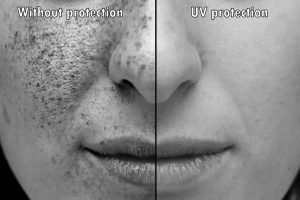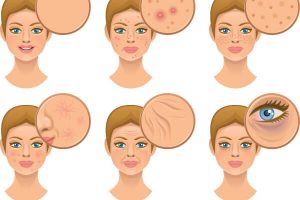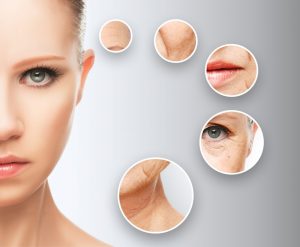Introduction
The relationship between sunlight and aging, often termed photoaging, delves into the visible signs of aging caused by prolonged exposure to UV light. Here, we explore the impact, signs, distinctions from regular aging, possibilities of reversal, preventive measures, and when to seek medical attention.
Understanding Sun Aging
- What is Sun Aging?
- Sun aging, or photoaging, results from radiation from the sun causing visible aging signs in the skin, primarily due to UV light.
- UV light, beneficial in small amounts for vitamin D synthesis, induces oxidative stress when exposure is excessive, leading to the breakdown of elastin fibers and loss of skin elasticity.
- Does the Sun Cause Most Aging?
- Research suggests that the sun contributes to approximately 80% of visible skin aging, with lighter skin tones more susceptible.
- Darker skin, containing more melanin for UV protection, experiences changes in skin color and sun spots rather than wrinkles.

Visible Signs of Photoaging
Sunlight aging manifests in various ways, including:
- Freckles
- Sun spots
- Dark or discolored patches
- Loose or drooping skin
- Fine lines and deep wrinkles
- Broken capillaries
- Rough patches
It’s crucial to note that not all sun damage is immediately visible on the skin’s surface, necessitating protective measures regardless of apparent signs.

Distinguishing Photoaging from Regular Aging
While the visible signs of skin aging may share similarities, distinctions between intrinsic (chronological) aging and extrinsic (photoaging) exist:
- Chronological aging affects the entire body uniformly.
- Photoaging targets specific areas exposed to sunlight, like the face, neck, or hands.
Possibilities of Reversing Sun Aging
While damage to deeper skin layers may not be entirely reversible, various dermatological interventions can help reduce visible signs:
- Retinoid products (e.g., retinol cream)
- Exfoliating treatments (e.g., microdermabrasion, chemical peels)
- Laser resurfacing and intense pulsed light treatments
- Ultrasound for skin tightening
- Fillers or Botox to address fine lines and wrinkles
- Cryotherapy for skin removal

Preventive Measures
Prevention proves more straightforward and cost-effective than reversal. Recommendations include:
- Avoiding tanning beds
- Limiting sun exposure during peak hours
- Using sunscreen (SPF 30 or higher)
- Wearing protective clothing and hats
- Tinting windows in vehicles and buildings
Consistent protection is crucial, especially for individuals undergoing treatments that increase skin sensitivity to UV.

When to Seek Medical Attention
Serious conditions, such as skin cancer, may arise from sun damage. Consult a doctor if you observe:
- Unusual growths
- Persistent rashes
- Pale, waxy, or scaly patches
- Non-healing sores or scabs
- New red or flesh-colored moles
- Changes in existing moles or dark spots
In Summary
While aging is a natural process, sunlight accelerates it, leading to sun spots, loose skin, and wrinkles. Understanding the impact of UV light empowers individuals to make informed choices for healthier and more resilient skin. Protective measures, coupled with dermatological interventions, offer a comprehensive approach to mitigate the visible effects of sunlight aging.










